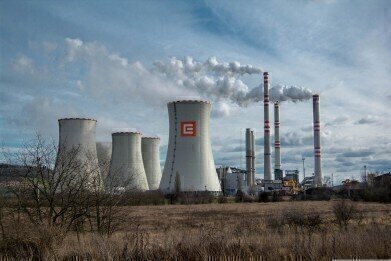Air Monitoring
What Is ADMS 5?
Aug 19 2022
Over the last few decades, authorities in the UK and elsewhere have begun to implement strict controls on the emissions produced by power plants, manufacturing facilities and other industrial sites. In order for site owners to comply with these regulations, technological solutions have been developed to allow them to project the emissions that they have already and are likely to produce in the future.
ADMS 5 is one of the most sophisticated dispersion modelling systems on the market. Originally designed for the use of British regulatory bodies, it is now being deployed by various environmental organisations, government agencies and private users across the UK and beyond. Through its use, site owners can determine the environmental impact of existing and proposed industrial installations.
How does ADMS 5 work?
One of the latest developments in the continuous emissions monitoring systems (CEMS) sector, ADMS 5 operates via a new-generation Gaussian plume air dispersion model. What that means is that the system dispenses with the single parameter Pasquill-Gifford class favoured by previous models in favour of a dual parameter set-up, consisting of the Monin-Obukhov length and the boundary layer depth.
As a result, ADMS 5 is capable of reflecting a more accurate representation of emissions than prior systems. It also comes equipped with an abundance of new features and functions, allowing users to customise the type of pollutant they monitor, the meteorological data they input and the output options they prefer, among many others.
ADMS 5 is also special in the amount and type of environmental variables it puts at the user’s disposal. Output readings can now be tweaked to accommodate such factors as nearby buildings, coastlines and uneven terrain, weather patterns, the behaviour of NOx emissions in terms of their ambient chemical reactions, amine emissions associated with carbon capture and storage (CCS) technology, plume visibility and many more.
What sets ADMS 5 apart from the competition?
As well as being both a predictive and continuous emissions monitoring system, ADMS 5 also offers a host of benefits over its rivals. For example, the US Environmental Protection Agency (EPA) currently favours an AERMOD system. ADMS 5 can match or surpass all of the basic features of that modelling software, as well as bring plenty of its own to the table.
Its ability to model the chemical reactions of NOx in ambient conditions, alongside its modelling of amine emissions caused by the CCS process, for example, are not included in the AERMOD system. Accounting for coastlines, marine boundaries and wind turbines in the vicinity of the installation are also features not presently offered by AERNOD.
Additionally, ADMS 5 also offers condensed plume visibility, in-plume temperature and humidity output values and radioactive decay information. For all these reasons and more ADMS 5 is seen as one of the industry-leading air quality modelling solutions on the market and is in use by customers across Europe, Asia, Africa, the Americas, Oceania and the Middle East.
Digital Edition
IET 34.2 March 2024
April 2024
Gas Detection - Biogas batch fermentation system for laboratory use with automatic gas analysis in real time Water/Wastewater - Upcycling sensors for sustainable nature management - Prist...
View all digital editions
Events
Apr 22 2024 Hannover, Germany
Apr 22 2024 Marrakech, Morroco
Apr 23 2024 Kuala Lumpur, Malaysia
Apr 23 2024 Kintex, South Korea
Apr 23 2024 Edmonton, AB, Canada


















